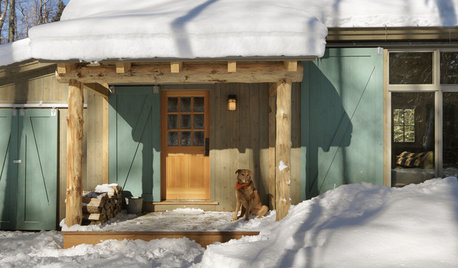Altitude
Mrobbins
12 years ago
Related Stories

SUMMER GARDENING6 Water-Wise Perennials for Blazing High-Altitude Summers
Scorching weather and high elevations don't have to mean scraggly plantings. These blooms are as gorgeous as they are tough
Full Story
GARDENING GUIDESAlpine Plants: High Performers at Low Altitudes Too
So Heidi and the goats aren't your neighbors. Alpine plants can be lovely and low maintenance on difficult sites beyond the mountains
Full Story
GARDENING GUIDES6 Lovely Water-Wise Perennials for High Altitudes
Even if your climate is cold and dry, you can still celebrate spring with these hardy and colorful perennials
Full Story
COLORFUL KITCHENSKitchen of the Week: High-Altitude Kitchen Bursting With Blue
A modest-size space gets a cheerful and smart update that improves flow and adds storage space
Full Story
GARDENING GUIDESWelcome Sweat Bees to Your Garden Throughout the Growing Season
Look before you swat! These friendly sweat bees will feed on your sweat on a hot summer day, but their main buffet is flowers
Full Story
LANDSCAPE DESIGNSee a Lush Australian Garden That Needs Little Water
Highly self-sufficient and sustainable, this oasis near Sydney offers something special around every corner
Full Story
FIREPLACESRumford Fireplaces Are Hotter Than Ever
Higher efficiency and good looks are leading homeowners back to this 18th-century fireplace design
Full Story
RUSTIC STYLE10 Cabin Rental Basics for City Slickers
Stay warm, dry and safe while you’re enjoying winter cabin life with this valuable advice
Full Story
KITCHEN APPLIANCESConsidering a New Kitchen Gadget? Read This First
Save money, time and space by learning to separate the helpers from the hassles
Full Story
LANDSCAPE DESIGNLet Nature Inspire Your Landscape: Devise a Desert Garden
Looking for the ultimate low-maintenance plant picks? Nature is way ahead of you
Full StoryMore Discussions






rob333 (zone 7b)
lilod
Related Professionals
Signal Hill Landscape Architects & Landscape Designers · Edmond Landscape Contractors · Battle Ground Landscape Contractors · Hilo Landscape Contractors · Vashon Landscape Contractors · Weslaco Landscape Contractors · Whitehall Landscape Contractors · Adrian Decks, Patios & Outdoor Enclosures · Bloomington Decks, Patios & Outdoor Enclosures · Layton Decks, Patios & Outdoor Enclosures · Alamo General Contractors · Florham Park General Contractors · Highland City General Contractors · University City General Contractors · Wheeling General Contractorsendorphinjunkie
User
calliope
lindac
west_gardener
gandle
MrobbinsOriginal Author
meldy_nva
west_gardener